STUTTGART, GERMANY/ATLANTA – January 22, 2009 – One of the greatest and most spectacular building projects in the history of Dr. Ing. h.c. F. Porsche AG was completed in December 2008: the new Porsche Museum in Stuttgart-Zuffenhausen. Located directly in the very heart of this unique sports car company so rich in tradition, the Museum serves to present the fascinating thrill and diversity of the Porsche brand to visitors from all over the world.
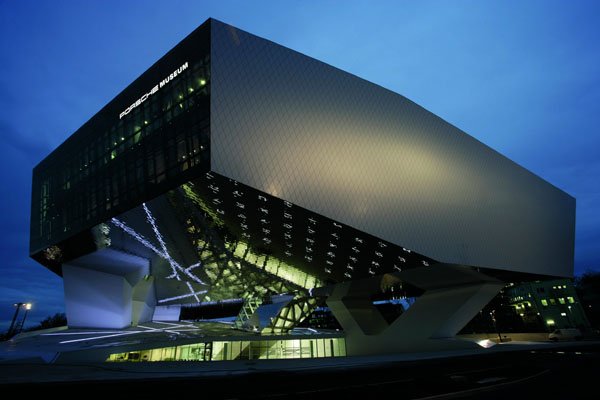
More than 80 cars are on display in the 5,600 square meters (60,250 square feet) Exhibition Area styled and designed futuristically by the Viennese architects Delugan Meissl, ranging from the legendary wheel hub motor of the Lohner-Porsche, the world’s first hybrid automobile built as far back as in 1900, all the way to the latest generation of the Porsche 911.
No less than 170 architects from all over Europe applied for the project before the architects of the Delugan Meissl office won the tender in February 2005. Construction work at Porsche – platz in Zuffenhausen started just half a year later and in November 2007 the body of the Exhibition Building was lowered on to three concrete cores, the first exhibits moving into the Exhibition Area not even one year later. On December 8, 2008, finally, the Museum was handed over to Porsche exactly on time.
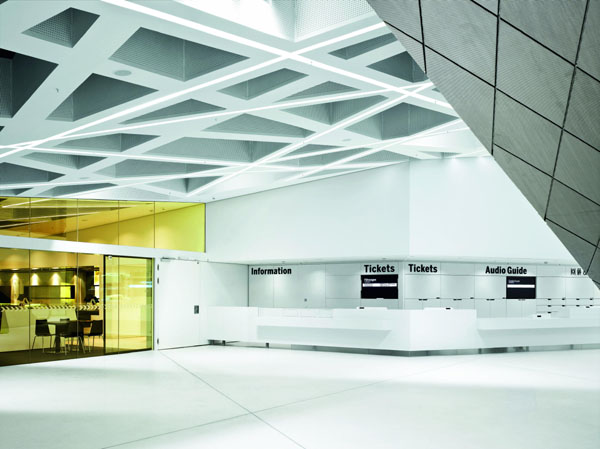
Porsche expects more than 200,000 visitors to the Museum each year, so-called Theme Islands and numerous small exhibits seeking to present the “Porsche Idea” in all its complexity.
Apart from the exhibition itself, the historical archives and the “transparent” workshop for historical cars, the Museum offers a wide range of catering services complete with a coffee bar, a bistro and an exclusive restaurant, as well as generous conference areas finished mainly in white, the fundamental color of the Museum.
The new Porsche Museum is also available as an event location for other purposes, for example for conferences, film screenings or concerts, quite independently of the usual exhibition activities.
The new building at Porscheplatz is located at a very important place in the history of German automobile production, since this is where the Porsche Design Office moved to from downtown Stuttgart to Plant 1 in Zuffenhausen back in 1938. In the same year the forerunners of the VW Beetle saw the light of day precisely here at this location, followed by the Type 64 Porsche as the ancestor of all Porsche sports cars, the legendary Berlin-Rome car, in 1939.
Sports cars proudly bearing the now world-famous Porsche logo have been built here in Zuffenhausen ever since 1950.
The exhibition concept
The actual Exhibition Area is made up of a daring steel structure resting on just three concrete cores and appearing to hover in space, covering a span of up to 60 meters or almost 200 feet. Inside the Museum Porsche’s historical cars and some 200 additional exhibits are grouped together in a carefully planned and highly attractive arrangement.
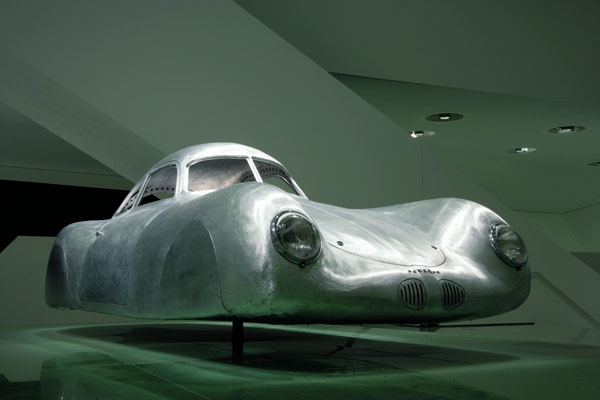
The visitor is guided through the Museum by the history of Porsche products, conveying the Porsche Idea through characteristic features such as “fast”, “light”, “clever”, “powerful”, “intense” and “consistent”.
Proceeding from precisely this fundamental philosophy, Porsche to this date has created trendsetting technical solutions for elementary challenges in automobile production. Just how consistently and convincingly the Porsche Idea has been conveyed into reality also follows from the development projects carried out by Porsche on behalf of other companies, Porsche Engineering, the subsidiary responsible for such projects, taking on a firm place in the Museum through selected examples of its work.
The exhibition concept of the new Porsche Museum was developed by the specialists of the Stuttgart HG Merz architects’ office in cooperation with Professor Gottfried Korff, a specialist on museology at Tübingen University not far from Stuttgart. Through their concept the creators of the Museum seek “to present issues of great significance to the Company and, at the same time, to document the long history of Porsche in its products.”
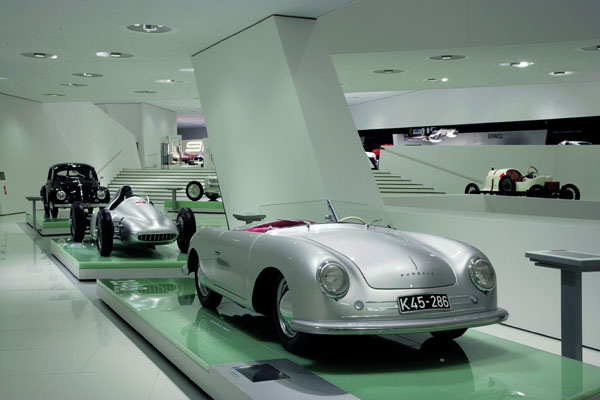
Indeed, this interaction of product history, the arrangement of specific themes and the Porsche Idea provides a perfect trinity of highlights borne out, for example, by the Porsche 356 America Roadster built in the early ’50s. Weighing less than 600 kg or 1,323 lb in road trim, this is indeed the ideal testimony to the concept of lightweight engineering. At the same time the Targa Florio theme underlines Porsche’s outstanding achievements again in lightweight engineering, combined with the success of Porsche’s extra-light racing cars also highlighted by the plastic body of the Porsche 908 race car.
In addition to all this, the interactive mediatheque, micro-cinemas and mobile audio-guides offer the visitor supplementary in-depth information.
From the exhibition straight to the road: the “Museum on Wheels”
Porsche cars do not grow old. Instead, they become classics still suited in every respect for
road use. Indeed, this is one of the secrets behind the success of the brand, which is also why the exhibits proudly presented in the Porsche Museum are always on the move, nearly all of the vehicles exhibited being entered regularly in historical races and drive events as Porsche’s “Museum on Wheels”.
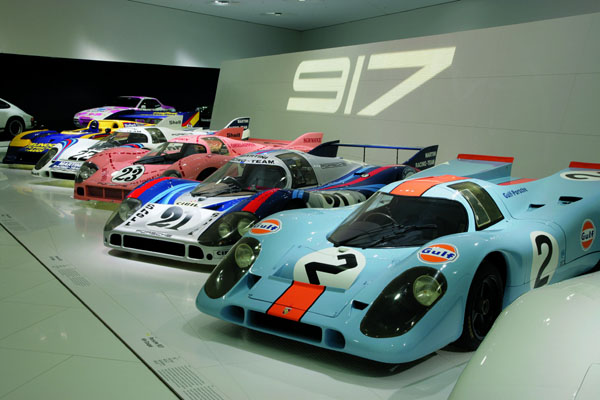
In 2009, for example, the 550 A Spyder will be making an appearance in the Italian Mille Miglia and the 356 Carrera Abarth GTL will be entering the Classic Adelaide in Australia. So instead of a conventional, static exhibition, the visitor is able to enjoy a constantly changing succession of cars with rarities re-arranged time and again.
Unique: the “transparent” Museum Workshop and the Porsche Archives
Porsche lives out its history – and customers live out Porsche’s history too. To ensure the highest level of care and maintenance for the brand’s historical cars, Porsche has established a special Museum Workshop where private customers are also able to have their classic cars restored. The visitor, in turn, has the opportunity to watch Porsche’s master mechanics and specialists working on all kinds of classic Porsches. For before the visitor even enters the exhibition, he will pass by the glass partition to the Museum Workshop, enjoying a truly unique experience of transparency offered the world over in this way only by the new Porsche Museum.
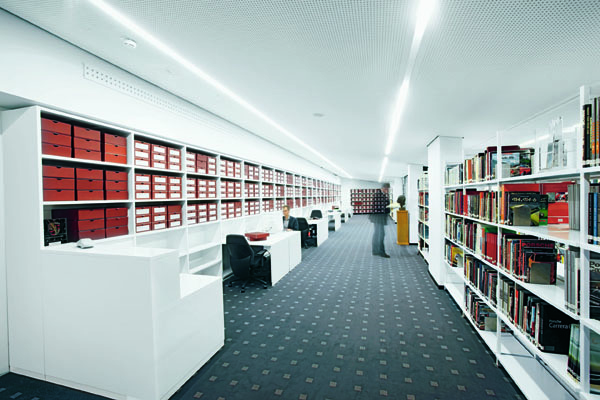
The historical Porsche Archives with all its treasures has also moved to the new Museum and is partly in sight through glass walls from the lobby. After registering in advance, specialists and enthusiasts are able to visit the archives for their research on the history of Porsche.
The Porsche Museum experience: the Catering and Event Area
Apart from the Museum shop, the coffee bar and the bistro, the new Porsche Museum offers two further highlights – the exclusive Christophorus Restaurant and a special Event Area. Visitors reach the restaurant through a separate entrance and may therefore enjoy all the culinary delights and amenities also after the Museum’s opening hours.
Looking out of the guest area, visitors enjoy a truly symbolic view, admiring not only the cars
in the Exhibition Area but also Porscheplatz and the Porsche Plant itself to be seen clearly through the glass facade.
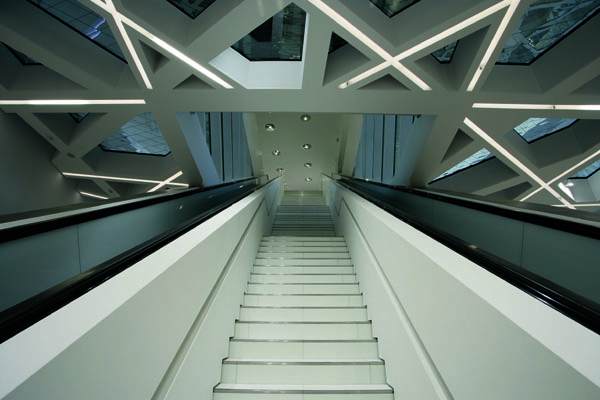
This interaction of past and future clearly underlines the pledge of the Company to its roots. The third floor offers ample space for events of all kinds and size, providing an ideal setting for meetings, seminars, conferences, lectures, concerts and film presentations. This area is indeed highly flexible in its use, mobile partitions serving to adjust the Event Area to the number of guests.
The Event Level moves on directly to a generous roof terrace. This spectacular location out in the open is reserved for special highlights such as car launches or particular presentations benefiting from the large dimensions and impressive space available.
Spectacular architecture: the “hovering” Museum
Ingenious ideas, fascinating technology and legendary cars certainly deserve an appropriate setting offered in perfection by the architecture of Porsche’s new Museum. And one thing is for sure: the building designed by Delugan Meissl is a genuine eye-catcher. Resting on just three V-shaped pillars, the dominant main body of the Museum appears to hover high above the ground like a monolith. This is the venue of the actual Exhibition, the Christophorus Restaurant and the Event Area with its roof terrace.
The basic building structure beneath the monolith houses the Lobby, the Museum Workshop and the Archives, the bistro and coffee bar as well as the Museum shop. The two bodies of the building are connected by a partly glazed, dynamically angled stairwell and a lift. A double-level underground garage with some 260 parking spaces, finally, offers visitors appropriate convenience in parking their car.
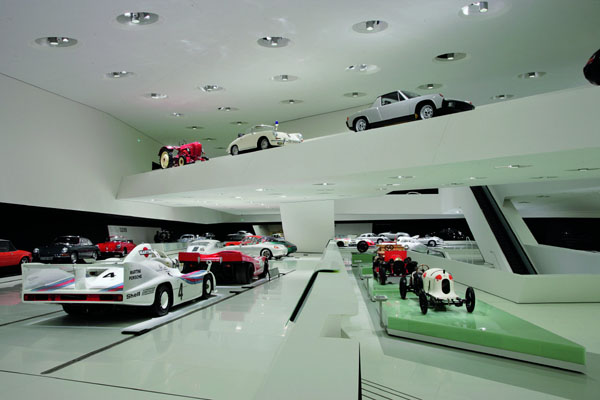
The monolith and the basic building structure stand out from every perspective through their polygonous, avant garde shapes as well as their various structures and window areas differing consistently in their geometry. The glazed front side of the Museum measuring 23 meters or 75 feet in height and proudly presenting the name “Porsche” faces to the north,
proudly welcoming visitors and passers-by driving into town in their car. Hence, the architects have succeeded on the one hand in creating an absolutely outstanding highlight ranking unique in its environment and, on the other hand, in generating a well-balanced overall impression.
“The new Porsche Museum creates a unique experience in space appropriately reflecting the self-confident attitude and the supreme standard of the Company through its architecture and at the same time bearing out all of Porsche’s dynamic character. Knowledge, credibility and a determined stance are just as much part of the Museum’s philosophy as courage, enthusiasm, power and independence. Every idea is seen as an opportunity to openly accept new challenges, to venture forward to the very limit, and at the same time to remain faithful to oneself. All this is to be reflected by this Museum”.
This is how the architects at Delugan Meissl express their dedication to the new Porsche Museum in Stuttgart. For it was this office from Vienna which in early 2005 won the architects’ contest for the development and construction of the new Porsche Museum in all its glory.
Welcoming the visitor as a true guest: generosity is seductive
The Porsche Museum welcomes the visitor with a generous gesture, the monolith opening up between the lower level and the street level to the generous height of 10 meters or al – most 33 feet to enhance the broad open space of the area in front of the Museum. Having passed through the main entrance, the visitor will come to the Lobby leading on to the bistro ”New Porsche Museum • Traveling in Time” through the History of Porsche 5 and coffee bar as well as the Museum shop, the cloakroom and cash registers. The rising design of the roof on the basic building structure provides ample space opposite the entrance for a second floor where the reading hall of the Archives is clearly in sight. Moving up an escalator, the visitor enters the Exhibition Area in the upper part of the building covering an area of approximately 5,600 square meters or 53,800 square feet. Now he can decide whether to start his tour of the Museum in chronological order with the history of the Company prior to 1948 or whether he would like to move on directly to the main exhibition area a few steps higher, following the likewise chronological presentation of the Company’s history after 1948.
Related Posts
Porsche News 2. The latest Porsche News on the Net
Porsche Museum Poised for On-Time Opening
Porsche Museum to Open Before Year-End
[Source: PCNA]